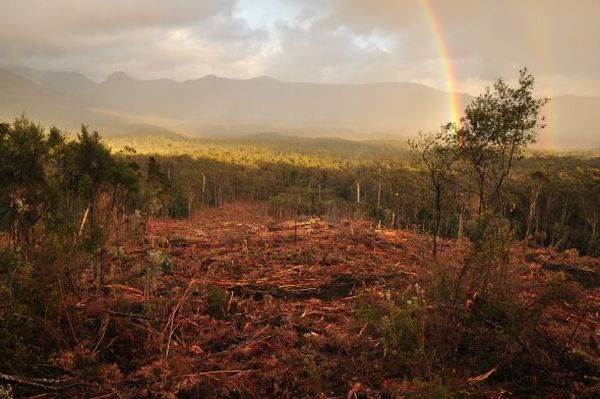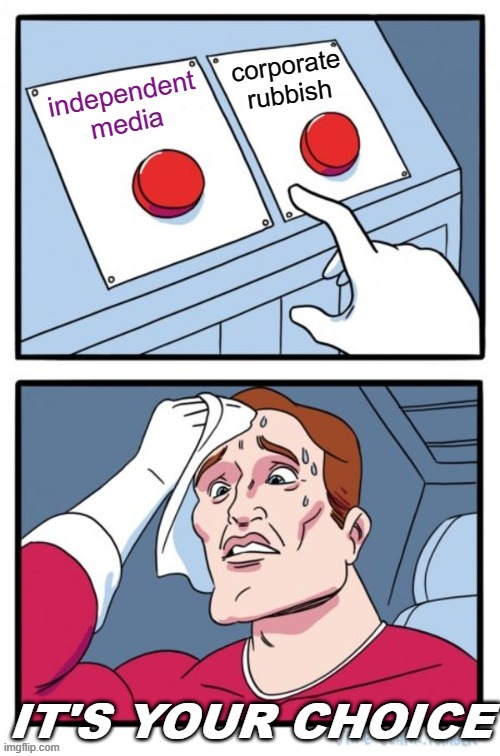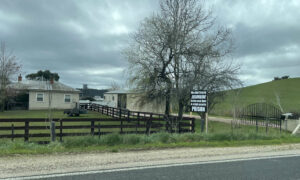*Pic: Logging in Catamaran at the height of Forestry Tasmania’s assault. Pic: Daniel Haley
First published November 15
Forestry Tasmania’s slide from its peak in 2004 has seen it lose $1 billion.
Almost half have been cash losses.
The rest have resulted from the loss in value of the trees entrusted to it. FT entered commercial arrangements with customers, particularly major customer Gunns, which effectively forfeited its commercial advantages as a monopoly supplier. As a consequence it fortunes closely tracked those of the industry particularly Gunns, and since the latter’s demise has only survived courtesy of government patronage.
After numerous inquiries, reports and years of procrastination, the government appointed Treasury Secretary to the Board in May 2015 to act as de facto Voluntary Administrator to see if FT could be resuscitated. An interim report was presented to government on 29th September 2016.His tenure lasted until February 2017, FT was restructured as much as its political masters would allow before being handed back for directors to run under the new name of Sustainable Timbers Tasmania (STT).
The following is a more detailed report on FT’s demise following the period of administration. It covers the events leading to insolvency, the actions taken and the prospects for the future …
…
The 2016/17 year
The biggest thing to happen to Forestry Tasmania (FT) in the past year was the change of name to Sustainable Timbers Tasmania (STT). Apart from that it was the same old story. Bleeding cash. The government tipped in $14 million. A further $14 million was borrowed from Tascorp. Nevertheless cash went backwards by $1 million.
If STT was really more sustainable it would’ve been evident from the figures.
It wasn’t.
Revenue may have risen by $14 million but the costs of harvesting and carting the timber to the mill door/wharf were up by $17 million. Not a sign of the turnaround suggested in the Minister’s (Guy Barnett) Media Release ( HERE: Sustainable Timber Tasmania $41 million turnaround ) which accompanied the release of STT’s annual report …
Read the full extensive analysis on Tasfintalk HERE
• Gordon Bradbury in Comments: “There’s no evidence the newly branded STT is any more sustainable (or profitable) than its predecessor FT”. That final sentence by John Lawrence is all we need to know. As usual we Tasmanians have been lied to, conned and ripped off. It’s time to shut down the public native forest industry once and for all.
• John Hawkins in Comments: Dear John, On these most excellent and detailed figures Barnett is proven to be an incompetent, lying pollie whose tenure in office should be immediately terminated.
• John Lawrence in Comments: Stu (#6) … What you’re saying is quite correct. There is no doubt that downstream industries do add value to harvested timber. Industries are always keen to advertise how much value they add, but one always need to approach such claims with caution. Take poker machine operators for instance. They claim to contribute x dollars to the Tas economy, but most of the money spent on poker machines simply is a diversion from other areas. Spending would have occurred in those other areas with probably even better employment and flow-over effects for the economy …

























Gordon Bradbury
November 14, 2017 at 09:12
“There’s no evidence the newly branded STT is any more sustainable (or profitable) than its predecessor FT”.
That final sentence by John Lawrence is all we need to know.
As usual we Tasmanians have been lied to, conned and ripped off.
It’s time to shut down the public native forest industry once and for all.
John Hawkins
November 14, 2017 at 11:36
Dear John,
On these most excellent and detailed figures Barnett is proven to be an incompetent, lying pollie whose tenure in office should be immediately terminated.
MjF
November 14, 2017 at 11:42
JL … Re the unfinded super liability, you!re claiming FT weren’t paying compulsory employee super contributions ?
Employees must have been aware of this by an absence of statements and/or no contributions to account balances, surely alarm bells would’ve been ringing internally amid internal rumblings ?
How long was this going on do you estimate ?
Now the state is paying the current and past contributions, correct ?
Re book loss, if the value of the forested estate is diminished by the simple act of felling trees thereby reducing standing ha’s, then why is there no value placed on regenerated forests or replacement plantations as new resource ?
If one asset is diminished by removal but replaced with another, why no value assigned to the replacement trees ?
Is this is how SST operates their accounts, then they are undervaluing the whole operation.
john lawrence
November 14, 2017 at 13:19
MjF (#3) … I’m only referring to defined benefit DB super. The super guarantee levy SGL started in 1992. Government DB schemes weren’t required to pay the SGL, originally 3%, as they were already committed to pay a DB, which required employer contributions well in excess of 3%. As they were/are required to pay a DB, they don’t have to set aside amounts monthly as is the case with accumulation funds. And that included the need to set aside SGL amounts.
The member statements given to current employee members of the DB scheme only include their own contributions plus earnings. There is no mention of employer contributions. It doesn’t matter. It’s a DB scheme. Their benefit is determined by member contributions, length of service and final average salary.
It’s the same with all government businesses and the government itself. If the government had to pay super contributions on behalf of DB members currently employed then it would have to find another $60m.
For a while FT set aside cash to help fund its future burden but that all disappeared about 10 years ago.
The way the forest estate is valued and is treated in the financials has changed over time. But currently when amounts are spent on plantations, roads or what is now called make good expenses (regenerating native forest I think this means) they are capitalised. You can see this from FT’s latest Annual Report page 109. So the replacement value is included. But every year the whole estate is revalued and the valuation changes included in the financials as biological asset valuation increment/decrements.
What I am arguing is that the specific costs of roads and make good expenses shouldn’t be capitalised and then written off as a biological asset decrements, but rather should be treated as an operating expense which should be immediately expensed just like harvesting and cartage costs.
Mark Poynter
November 14, 2017 at 13:33
I haven’t read the attached article, but it seems that much of FT/SSTs position is related to the valuation of the forest asset they control, so just a few observations:
Obviously timber assets cyclically grow or diminish in value as they are harvested and regrown. For example a mature plantation that is due to be harvested next year has a far higher value than the same area two years later when it has been replanted but is now three decades away from realising its final returns.
Secondly, the valuation of a resource is strongly related to how much of it there is. If political decisions have diminished the area of timber asset that is still available (or made it temporarily unavailable), clearly the resource controlled by FT/SST drops in value.
Thirdly, timber resource valuation is based on the market price. If markets are flattened by, for example, a Global Financial Crisis, or the loss of the largest customer (Gunns), then the value of the asset falls accordingly.
Fourthly, I note a comment about how the costs of harvesting have risen and that this is also hurting the bottom line. This can also be related to political decisions which fragment the resource and increase the roading requirements and the cartage distance.
So, my point is that these are all things that are largely beyond the control of FT/SST and yet article after silly article on TT attributes this solely to supposed ‘mismanagement’. There undoubtedly have been some matters that haven’t been well-managed, but it should also be admitted that much of the problems of FT/SST are due to externalities beyond their control, or the natural variation in valuation inherent to managing a timber resource.
Stu
November 14, 2017 at 13:46
John, if we are to be fair about the economic loss, where is the inclusion of the value of forest products?
I’m not talking about the value of logs sold but the inclusion of the value of finished products. Say a cubic meter of flooring is worth $3000, that $3K is either exported out of Tas and generates money for the state, or used within the state that would otherwise require substitution with imports had it not been produced here, hence an economic loss to the state.
Just wondering if you or anyone else might consider this in the economic analysis of overall profit and loss.
MjF
November 14, 2017 at 14:02
$4 … Thanks for clarity on DB vs accumulation.
Re the estate valuation, it would make sense to account for regeneration costs ( if that’s what ‘make good expenses’ actually includes), as an operating expense.
Presumably then the whole estate annual revaluation does recognise the new trees by considering a separate regeneration value within the overall calc.
Why is accounting so grey and seemingly so open to interpretation, creativity and multiple ways of presenting figures ?
john lawrence
November 14, 2017 at 14:55
Stu (#6) … What you’re saying is quite correct. There is no doubt that downstream industries do add value to harvested timber. Industries are always keen to advertise how much value they add, but one always need to approach such claims with caution.
Take poker machine operators for instance. They claim to contribute x dollars to the Tas economy, but most of the money spent on poker machines simply is a diversion from other areas. Spending would have occurred in those other areas with probably even better employment and flow-over effects for the economy.
The perennial question is whether the Tas economy could have ended in a better position if the moneys channeled into FT had been spent elsewhere. Value-adding to timber does contribute to the Tas economy, and more so than poker machines I might add, but to date it is costing the government a lot to enable the industry to add that value.
There are also what I call the balance sheet losses where, while there may be positive contributions being made, our asset base is gradually diminishing.
Richard Kopf
November 14, 2017 at 16:00
Taxpayers are paying to destroy Tasmanian’s treasures, the forests and the coastline, by courtesy of Tassal. Do we calculate into these figures the cost of the loss of our natural attributes?
How sick are we to let this happen?
max
November 14, 2017 at 18:13
# 8 John … There are also what I call the balance sheet losses where, while there may be positive contributions being made, our asset base is gradually diminishing.
In the case of special timbers and with few exceptions, they are a one-off harvest. Would the return to the state as a tourist attraction be better than a table in someone’s home?
Gordon Bradbury
November 14, 2017 at 18:39
Both of these recent documents by John Lawrence on FT’s performance should be Tabled and Read in both Houses of the Tasmanian Parliament.
Our politicians are now officially culpable in a massive taxpayer ripoff.
For those who have no understanding of basic economics, BHP does not include the value of the entire Australian economy when it presents its annual results.
If there is downstream value adding then it is attributed to those companies which value add, NOT the company that produced the raw material.
Please go and do a basic unit in economics before you spin this forestry rubbish.
Stu
November 14, 2017 at 19:08
Gordon, don’t bother telling me to do a basic economics course. If you want to go down that path then I could tell you a bit about your economic understanding, starting with your Blackwood Growers Coop attempt at the economics of blackwood plantations.
Downstream value-adding is applicable to the overall economics of the forest industry, for without the raw material input from SST or whoever, these companies don’t exist.
As John stated, what I’m saying is correct. I’m not saying that overall it’s in the positive or negative, but it does need to be taken into account for a more realistic overview.
john lawrence
November 14, 2017 at 19:15
Precisely, Max (#10)
Gordon Bradbury
November 14, 2017 at 19:27
This document by John Lawrence should be the Death Certificate for the public native forest industry in Tasmania.
Unfortunately the Tasmanian community remain largely ignorant or apathetic.
And our politicians remain well beyond contempt.
john hayward
November 14, 2017 at 21:16
You have to pinch yourself to remember that STT/FT is a disaster solely by its own lights. Add on the uncalculated long-term damage to water supplies, air quality, tourism, public health, public education and every other public service being leached by this entrenched racket.
John Hayward
TGC
November 14, 2017 at 22:43
#8 “… but most of the money spent on poker machines simply is a diversion from other areas. Spending would have occurred in those other areas with probably even better employment and flow-over effects for the economy.”
One may make a similar point about another much touted ‘industry’- that of ‘Food Fares- Lots of money is spent on these as ‘consumers’ sample what’s on offer- frequently at inflated prices. Unless these same consumers have reserves in the household budget tank specially for these events -they have probably spent more on the food/drinks than they would have had they stayed home-and shopped locally.
spikey
November 14, 2017 at 23:09
#15
‘You have to pinch yourself to remember that STT/FT is a disaster solely by its own lights. Add on the uncalculated long-term damage to water supplies, air quality, tourism, public health, public education and every other public service being leached by this entrenched racket.’
nah mate its worlds best practice
squark squark squark
Wining Pom
November 15, 2017 at 01:26
Wow #16, TGC … So adding value to a local product by processing it is bad? That’s really foot in mouth.
One wonders about the argument of ‘value adding timber products’ which is actually giving away our money.
Big stuff up there, TGC.
TGC
November 15, 2017 at 10:40
But #18- selling it at punitive rates to a ‘captivated’ consumer…
Robin Charles Halton
November 15, 2017 at 12:00
The latest seems to be there is a global shortage of reliable supply of quality woodchip resource!
As I understand the situation that is why JNS is planning for an export loading facility on Esperance Bay to effectively utilise the Southern residues directly from their South Wood plant via a system of linked forestry roads to the west and south west of the Geeveston forests to the export facility at Strathblane.
I would consider this to be potentially an exciting project to solve the Southern residues problem for which has been hampering productive forestry activities for some time.
There is doubt the usual grizzlers on the TT blog site will continually pester the editor to post their usless comments.
I am saying we should get behind this project and follow it as information becomes available, at least it does appear to show the way foward for forestry activity in the State.
Mark Poynter
November 15, 2017 at 13:22
#6 and #12 Stu … You are correctly identifying the now often-used tactic to denigrate the value of forestry.
A recent example in Victoria has occurred in relation to the ENGO/Greens campaign to create a so-called ‘Great Forest National Park’ which would close down the Central Highlands’ native hardwood timber industry.
In a recent ANU paper, the value of ‘native forestry’ in the Central Highlands forest was said to be just $12 million per year supporting just 150 – 200 jobs, and associated media coverage equated this to the total value of the regional timber industry.
In fact, all that the ANU paper had valued was the in-forest component of the industry – that is, the harvesting and haulage of logs. It had not included the far greater economic activity and employment in log processing and wood products manufacture that flows from and is totally dependent on the supply of those logs.
In fact a study in 2015 by Deloitte Access Economics which had valued the whole of the Central Highlands timber industry (both in and outside the forest) had found that it generated economic activity of $570 million per annum and employed 2,100 people. So … the difference between $12 million and $570 million measures the extent of deceit used to downplay the socio-economic importance of an industry.
In a similar vein, the mandatory creation of 12 ha circular reserves around hundreds of recent confirmed detections of Leadbeater’s Possum has devastated log supplies to the local sawmills. VicForests reported that the income foregone in being unable to harvest these formerly available areas would be around $15 million by 2030.
This was reported as though it was the timber industry’s lost income, when in fact it was merely lost income to VicForests from foregone log sales. In fact, the actual lost income to the industry and the wider regional community would be massively greater in terms of reduced activity in log processing and wood products manufacture and sales.
Tim Thorne
November 15, 2017 at 15:35
So, Mark #20 … how would you go about saving the Leadbeaters possum?
spikey
November 15, 2017 at 17:33
socio-economic performance
ha
is that like social licence
squark squark
deceptive economics
ha
pieces of eight
pieces of eight
Be nice if Tasmanians were able to halt logging when they find threatened species that the industry was supposed to have adequately checked for.
Be nice if we could stop throwing our money at completely dishonest vandals intent on devaluing resources, the environment and the economy.
john lawrence
November 15, 2017 at 21:54
Mark (#21) talks about how Deloitte have measured the level of activity being a measure of the socio-economic importance of an industry.
There is extensive literature on the shortcomings of types of models used by Deloitte. I quote from a Productivity Commissions study (Gretton, P. (2013), On input-output tables: uses and abuses):
“Abuse primarily relates to overstating the economic importance of specific sectoral or regional activities. It is likely that if all such analyses were to be aggregated, they would sum to much more than the total for the Australian economy. Claims that jobs ‘gained’ directly from the cause being promoted will lead to cascading gains in the wider economy often fail to give any consideration to the restrictive nature of the assumptions required for input-output multiplier exercises to be valid. In particular, these applications fail to consider the opportunity cost of both spending measures and alternate uses of resources, and may misinform policy-makers.â€
In the case of the forest industry you need to consider the alternate use of resources. Could better results be achieved if governments had spent their money elsewhere?
Frank again
November 16, 2017 at 01:16
Good question John:…”Could better results be achieved if governments had” demanded that forests be managed, consequently maintained productive for their whole value reasons?
Sadly the crop of forest miners that was created / trained and mustered especially in Creswick and even Canberra were all about the exploitation of the dominating fireweeds.
It is a mess now – the sad reality of simplistic KISS application to complex ecosystems.
No change means – just more of the same negative stuff in future.
“frankly speaking”
Stu
November 16, 2017 at 08:52
John, in part I agree with your sentiments. Economics is not an exact science! If it were, life and politics would be that little bit easier. However, even if the value of forestry to the Vic economy was half of what Deloitte claims, it’s still significantly more than falsely claimed by those that oppose the industry.
Frank, another cheap shot at your percieved standard of low forestry education here in Australia. Hey, I went through Creswick 🙂
We met at a PFT field day remember. Only input you had for the day showed your lack of understanding of radiata silviculture. Hope this doesn’t reflect your standard of forest education.
Frank again
November 16, 2017 at 10:56
John, Stu and all … It is about time for positive change in natural resource management practices for many reasons
– Let’s look what is on the agenda in California, the home of Monterey Pine and Monterey Cypress:
BONN | November 13, 2017
A new peer-reviewed study published in Proceedings of the National Academy of Sciences from scientists at The Nature Conservancy found that natural climate solutions are an immediate and viable way to help mitigate climate change and meet California’s long-term climate goals.
It is the first ever study quantifying how much the restoration, conservation, and management of the California’s lands could contribute to the state’s ambitious climate target. The study can support state efforts to incorporate land-based climate strategies into plans to meet the 2030 goals set by the legislature, and follows the launch of The Nature Conservancy-led study on global natural climate solutions, launched in mid-October.
… “This study shows that managing, conserving and restoring lands can be part of a portfolio of land management techniques that landowners could implement to help fight climate change. Many of us want to find ways to help address climate change, while maintaining our way of life.â€
https://www.nature.org/newsfeatures/pressreleases/new-science-on-climate-benefits-of-ecosystem-management-in-california.xml?src=share.nature.addthis.facebook#.WgyFIVUFgD0.facebook
Quick Facts on Study Findings
•Improving land use in California could contribute as much as 17 percent of the emissions reductions required to meet the state’s 2030 climate mitigation target (40% below 1990 levels). In 2030, the projected total median annual reductions achieved by implementing the 14 activities modeled is 12.1 million metric tons of CO2-equivalent, under an ambitious implementation scenario.
•Most reductions are predicted to come from changes in forest management (61 percent of 2050 projected cumulative reductions), followed by reforestation (14 percent), avoided conversion (11 percent), compost amendments to grasslands (9 percent), and wetland and grassland restoration (5 percent).
•Conserving and managing natural and agricultural lands to retain and absorb GHGs are tools that have not been widely integrated into climate policy, but there is a growing global recognition that it’s important. An aggressive implementation scenario provided over 2x the benefit of a limited implementation scenario.
•The implementation of the proposed activities would help ensure that the state’s natural and working lands are a part of the state’s climate solution, helping the state potentially exceed its climate goals.
Many of the activities analyzed in the study are cost-effective, adaptable, and being considered as fundable actions to mitigate climate change. —
The Tasmanian Forest Industry, Agriculture and Aquaculture will (need to) change and many practices that created and that are still discarded / disposed of as “waste” will be part of the value chain. Upcycling is the economic, commercial driver …
Time will tell.
Mark Poynter
November 16, 2017 at 11:21
#22 Tim Thorne … “So, Mark #20 … how would you go about saving the Leadbeaters possum?”
Thanks for the question Tim…. I am presuming that what you really mean is how can it be saved from logging. Given that this is how its survival has been continually framed in the rhetoric of ENGOs and ANU ecologists and reported largely word-for-word by the media.
In fact it is becoming patently obvious that Leadbeater’s Possum doesn’t need to be saved from logging and never did, given that over 70% of it’s preferred forest type (Mountain Ash) is already in reserves that will never be logged. I imagine that you would be surprised by that figure because the public debate about forestry almost never admits that most forest habitat is already reserved.
In the three years since 2014, an improved possum survey method introduced by Victorian Government scientists has found over 500 new LBP colonies living in just a 6 – 10% portion of its potential habitat range. Compare this with the fact that in the previous 16 years only 150 colonies had been found, and it seems clear that the previous research was grossly understating the actual abundance and resilience of the possum.
The crisis for the local timber industry, which has created headlines over the last year or so, stems from the fact that despite so much of the possums’ habitat being already reserved, the Vic Government had committed to creating a mandatory 12 ha circular reserve around every new possum detection, and so with so many possums being found this has drastically cut the available wood supply. There was supposed to be a cap on the number of these new circular reserves, but thus far the Govt has ignored this thereby further disadvantaging the industry.
That’s not to say that the LBP and other forest species are completely free of threat, but with the vast majority of forest habitat in some form of reserve (over 90% over the whole state), it is clear that logging is not the real threat. In fact it has always been unnatural fire regimes, but this is not something than can be addressed by closing timber industries to create more reserves.
In fact, the progressive removal of the Victorian timber industry which has already occurred over the past 15 – 20 years has had a significant impact on reducing the capacity to manage the fire threat by reducing experienced workforces and diminishing the road access network. So it is clear that simplistically creating more national parks to supposedly save wildlife is actually having the opposite effect.
spikey
November 16, 2017 at 11:36
I share Franks perceived low standard of forestry education, purely because the same plonkers keep talking the same bollocks and I’m not certain their tongue is in their cheek when they parrot industry propaganda.
Worlds Best Practice
Fertile Ash Beds
Mixed Forest
etc etc sqark squark
If that wasn’t obvious enough, look at how poorly our forests have been managed, for sale right now to the lowest bidder having cost us a pretty penny to degrade and devalue. (Not the bloody greens fault)
I’m more inclined to suspect forestry education is more like ye old ‘ag science’ where enthusiastic farmer types are taught the brilliant fertiliser and chemical application routines bound to squeeze the last bit of life out of degraded soils.
I also suspect they spend more time studying ‘public relations’ than forestry, or are at least heavily coached by nefarious types.
Mark Poynter
November 16, 2017 at 11:45
# 24 JL … I don’t disagree that economic modelling is an inexact science that could overstate, or perhaps even understate, the total socio-economic value of an industry.
However, that can’t really be compared with deliberately leaving out the great majority of an industry’s activity to manufacture a perception that it isn’t worth much, which is essentially what ENGOs, some academics, and the media are doing in relation to Victorian forestry.
#25 Frank again …
Forest mining?? …. if true that would entail no regeneration of the forest for future harvesting. However, the silviculture of how to regenerate forests was/is integral to the forestry training at Creswick and Canberra and to the later field careers of those who graduated.
Dominating fireweeds?? … as most Australian forests and woodlands are naturally dominated by eucalypts, it is surely right that productive forests have been managed to perpetuate that natural dominance.
Frank again
November 16, 2017 at 23:32
Re Mark Poynter #30 … Where are the rich regrowth forests / who are the forest managers that had at their core business agenda to managed the natural forests for all values?
1. Maintenance of Hydrology value?
2. Continuous flow of production value?
3. Timber species diversity potential?
4. Quality assurance?
5. Quantity assurance?
6. Job/ meaningful employment security?
7. Biodiversity within the forest?
8. Market security ?
9. Broad Community support?
10. Responsible, sustainable financial returns?
Where are the non fire responding species in the forest management agenda?
You know and I know that the wasted opportunities that the forest mining industry practiced at least since relatively short lived woodchip frenzy began, and possibly even much earlier due to the sheer overwhelming natural treasures that were not appreciated by the experts.
The facts and reality is clear – the case is a mess.
Robin Charles Halton
November 17, 2017 at 00:56
Ah,forget the Green drivel, forestry is bouncing back with with strength!
Terry Edwards with a smile on his face announces that “The creation of a dedicated export facility for forest products in the south has the potential to unlock the value of plantation on private property that has significantly lost value in the wake of the collapse of the MIS schemes.
Anyone with an interest in forestry should regard James Neville-Smith’s plan to open a wood processing yard at Southwood and truck containerised woodchips to an export loading facility at Strathblane via existing forestry roads links west and south west of Geeveston needs to be supported as a reasonable initiative in the making!
Chris
November 17, 2017 at 11:20
Now where have I heard this voice before?
On the radio.
At a Rouse meeting, organising a Sock Event?
At a Choc Top kid Liberal meeting, Sam was there?
Anyone condemning the National Socialist is a turncoat perhaps?
Where Oh Where?
http://www.abc.net.au/radio/hobart/programs/mornings/mornings/9140752
mike seabrook
November 17, 2017 at 19:35
when the forestry history is rewritten
there was once a 6 month delay in turnbull and the lib feds stuffing around with gunns pulp mill approvals
if this had not happened gunns would have raised external capital ( at a time when the world wood pulp prices were more favourable) and been 6 months advanced in planning /construction at a critical time and this may have been past the time in which the project could have been halted
Wining Pom
November 18, 2017 at 19:15
‘But #18 … selling it at punitive rates to a ‘captivated’ consumer …’
Tax payers are captivated. People who choose to visit one event or another CHOOSE to go and decide whether to purchase anything. We taxpayers do not get to choose to give one million dollars a week to forestry.
MjF
November 20, 2017 at 18:05
“If STT was really more sustainable it would’ve been evident from the figures.”
I don’t see how this is possible.
STT didn’t commence until 1/7/2017.
None of the figures relate to STT. Even the $6.2 mill changeover cost is an FT expense.
The 2017 annual report and losses are all Forestry Tasmania’s achievements.
How STT perform in the 2018 year will be their acid test.
Gordon Bradbury
November 24, 2017 at 10:39
This is interesting:
https://www.responsiblewood.org.au/
The Australian Forestry Standard has just rebadged itself as “Responsible Wood”. Just as good a swindle as rebadging FT to STT !
Responsible?? Responsible to plundering Tasmanian taxpayers.
The fact that third party PEFC certification allows this incredible swindle is just extraordinary.
Todd Dudley
November 26, 2017 at 10:38
Has anyone calculated subsidies to the plantation industry?
Factfinder
November 28, 2017 at 09:57
For the record:
“We all know that forests are wonderful places. They are a precious living resource that provides food, heat, energy, medicine, timber, paper and a variety of products; they promote biodiversity by giving habitats and shelter; they are an integral part of the water and carbon cycles; and they have a fundamental role in regulating the climate.
“More than one in five people worldwide – an estimated two billion people – are believed to depend on forests and the services they provide for their livelihoods, yet forests are among the world’s most vulnerable ecosystems.
“Forests are rich in species compared to other ecosystems, providing habitats for more than half of terrestrial species, including our own unique Australian fauna. They also provide water for many of our rivers, helping to secure the quality and purity of what we drink and use every day.
“Culturally and historically, the intrinsic value of forests, and the spiritual and sacred use of forests, is of great importance to local communities and our cultural identity.
“Forests are also of significant economic importance; the forest sector contributes more than AUD $580 billion to the global economy. In Australia, the forest and wood manufacturing industries generate more than AU$23.5 billion a year and employ an estimated 64,000 Australians*.
“If forests are to continue to deliver the full range of benefits that people and nature are dependent on, they need to be conserved and managed responsibly.
“Sustainability is at the core of this approach, which is a continuation of the unique, millennia long relationship which has shaped the Australian landscape and its inhabitants.”
Source: Australian Dept. of Agriculture and Water Resources, 2017 …
https://www.responsiblewood.org.au/responsible-wood/a-sustainable-forestry-industry